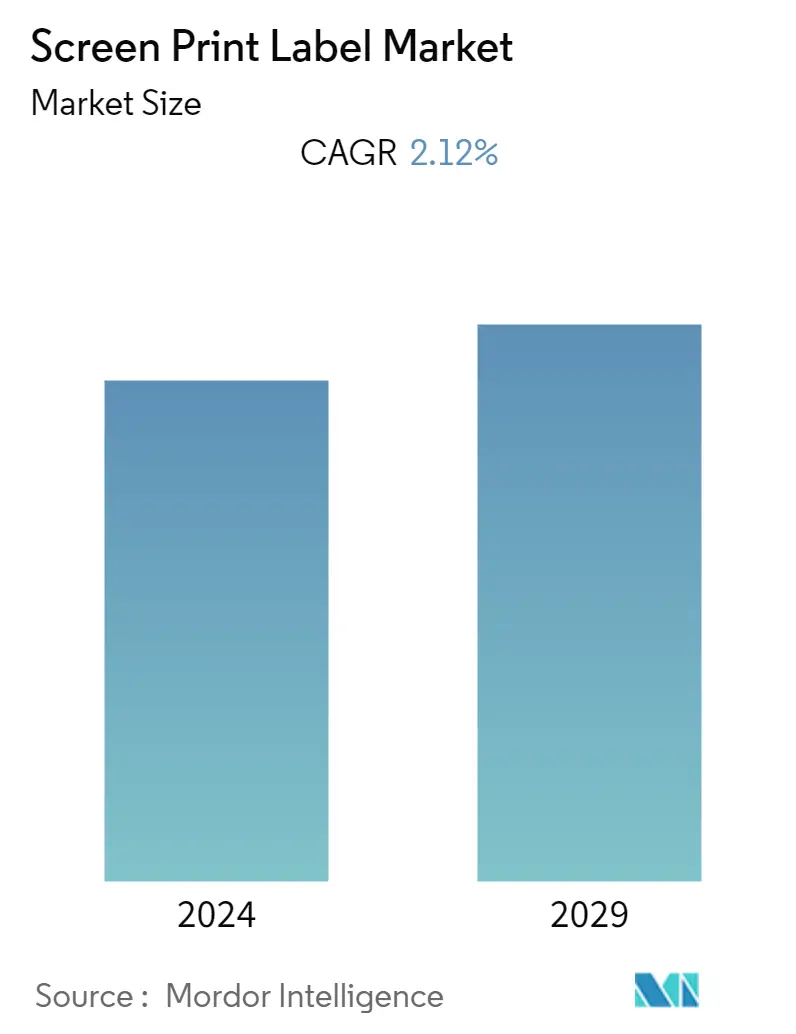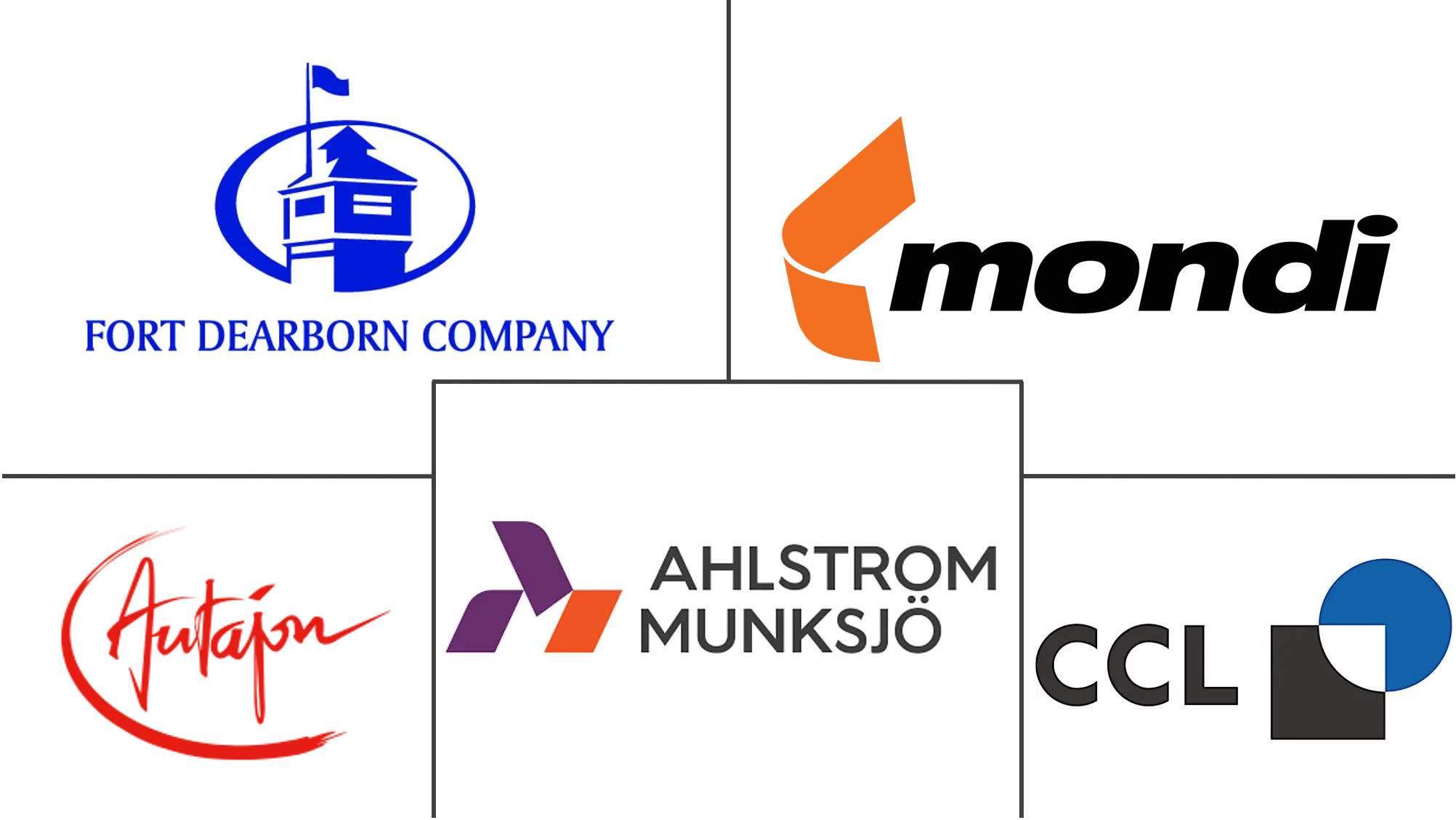Market Size of Screen Print Label Industry

| Study Period | 2020 - 2029 |
| Base Year For Estimation | 2023 |
| CAGR | 2.12 % |
| Fastest Growing Market | Asia Pacific |
| Largest Market | North America |
| Market Concentration | Low |
Major Players
*Disclaimer: Major Players sorted in no particular order |
Need a report that reflects how COVID-19 has impacted this market and its growth?
Screen Print Label Market Analysis
The screen print label market is expected to reach a CAGR of 2.12% over the forecast period. One of the growing uses of the screen label process is in the area of product security. Microscopic taggants are blended into coatings and applied via screen printing onto labels and other packaging products. Such taggants, when scanned, deliver proprietary brand information and are aimed at foiling counterfeiters. The usage of product security will follow a positive trend in the coming future.
- Abrasion and moisture-resistant properties and smooth ink coating drive the market over other printing process. The ink film thickness is so appropriate that this process excels in applications where properties such as resistance to weather (outdoors), moisture, abrasion, and chemicals, are needed. This property makes a natural fit for beverage labels.
- Additionally, the single greatest advantage that screen printing has over all other production printing processes is in the volume of ink that can be laid onto a substrate. UV letterpress can deposit ink as thick as 2 to 3.5 microns; UV offset is 1.5 to 2.5 microns; gravure is 2 to 5 microns; and UV flexo can lay down from 3 to 8 microns. However, the UV screen has an ink thickness ranging from 4 to 30 microns and beyond. The thickness of the ink provides screen-printed inks with opaque properties than in other printing process for labeling.
- Moreover, the adoption of screen-printing silicon ink is driving the market. With new fabric availability in the market, ink suppliers are stepping up to the plate to offer new, enhanced products that enable decorators to use their skills fully. Silicone inks are highly based on cutting-edge silicone polymers for delivering the ultimate stretch and feel on the latest performance fabrics. The inks have been innovatively designed, which brings out the strengths and benefits of silicone chemistry to the textile screen printing operation. In the future, the trend will focus on its usage of high-density silicone ink for 3D heating press transfer labels in applications other than apparel.
- Expensive solution for printing with many colors challenges the market growth. The alternative to lower the cost is a digital printing solution, which provides a better option when printing with many colors. Moreover, fine text may be difficult to screen print due to the thickness of the ink, whereas digital or flexographic printing is a good option for fine imagery.
- The two biggest problems the epidemic created for print label companies were productivity growth and remote customer service. The consistent demand throughout the epidemic's early stages put enormous pressure on the manufacturing capacity of the labeling companies, stressing the necessity for automation throughout the different stages of the product life cycle. Furthermore, the Russia-Ukrain war has an impact on the overall market.
